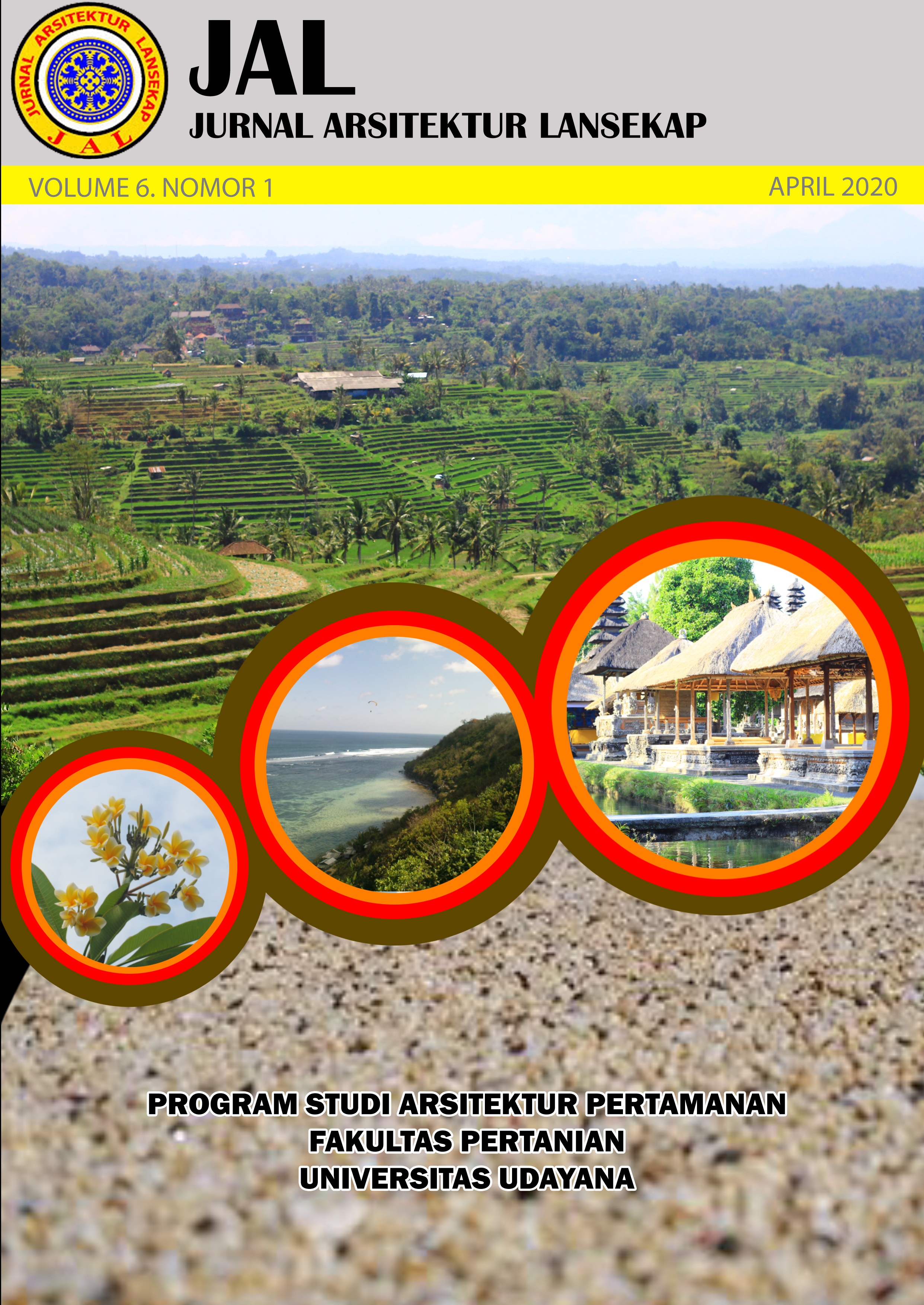Evaluasi keberadaan ruang terbuka hijau di Kecamatan Tangerang, Kota Tangerang, Banten
Abstract
Tangerang City is one of the cities in the Tangerang region which is known as a city of a thousand parks with various types and functions. Tangerang City is consists of 13 sub-districts, one of them is Tangerang SubDistrict that has an area of 17,45 km² based on land use Tangerang Sub-District is has a more diverse and wider green open space and as an ecologically is.complete for all aspect in landscape structure compared to other sub-districts. Landscape structure is an arrangement of landscape elements consisting of green open spaces in form of corridors as the green belt along the river, the green belt along the railroad, matrix as soccer field, network as the green belt along the way, and patches as road island (Godron, 1963: 83). Although as an ecologically is complete.compared to other sub-districts, however, the Spatial Planning requires 30% and the area is green open space. For this reason, it is necessary to evaluate the existence of green open space, evaluation is done as an effort to achieve the goal of forming a system of green open space as an effort to increase the percentage of green open space to 30% of the total area. This research was conducted with a qualitative approach, while the qualitative stage is to evaluate the fulfillment of the criteria and each of the mapped green open spaces. Data collection is done by survey methods in the form of observations, questionnaires and interviews, whereas to do data analysis using the assessment method, which is often done to evaluate the existence of green open space (Besari, 2014).
Downloads
References
Chiara, Joseph de dan Lee Koppelman. 1982. Urban Planning and Design Criteria. London: Van Nostrand Reinhold.
Dramstad, Wenche E. et. all. 1996. Landscape Ecology Principles in Landscape Architecture and Land-Use Planning. USA : Island Press.
Forman, Richard and Michael Gordon. 1983. Landscape Ecology. John Wiley & Son : New York.
Landscape ׀ Ecology ׀ Informatics. Landscape Ecology. (Accessed on 18 January 2019). Available online at: http://ecologics.ucalgary.ca/lab/science/landscape-ecology/
Pemerintah Kota Tangerang. 2010. Rencana Tata Ruang Kota Tangerang 2010-2030. Tangerang RTRW Kota tangerang 2010-2030.
Rully, Besari B. 2016. Metoda Penilaian Wilayah Pesisir: Upaya Mengetahui Karakteristik Lanskap Sensitif.
Temu Ilmiah IPBLI 2016 [internet]. [diakses 23 November 2019]. Tersedia dari https://temuilmiah.iplbi.or.id/wp-content/uploads/2016/12/IPLBI2016-A-059-062-Metoda-PenilaianWilayah-Pesisir-Upaya-Mengetahui-Karakteristik-Lanskap-Sensitif.pdf
Yang, Zhifeng (Ed.). 2013. Eco-Cities A Planning Guide.United States of America: Taylor & Francis Gorup, LLC.

This work is licensed under a Creative Commons Attribution-ShareAlike 4.0 International License.
An author who publishes in the Jurnal Arsitektur Lansekap (JAL) agrees to the following terms:
- Author retains the copyright and grants the journal the right of first publication of the work simultaneously licensed under the Creative Commons Attribution-ShareAlike 4.0 License that allows others to share the work with an acknowledgement of the work's authorship and initial publication in this journal
- Author is able to enter into separate, additional contractual arrangements for the non-exclusive distribution of the journal's published version of the work (e.g., post it to an institutional repository or publish it in a book) with the acknowledgement of its initial publication in this journal.
- Author is permitted and encouraged to post his/her work online (e.g., in institutional repositories or on their website) prior to and during the submission process, as it can lead to productive exchanges, as well as earlier and greater citation of the published work (See The Effect of Open Access).
Read more about the Creative Commons Attribution-ShareAlike 4.0 Licence here: https://creativecommons.org/licenses/by-sa/4.0/.







